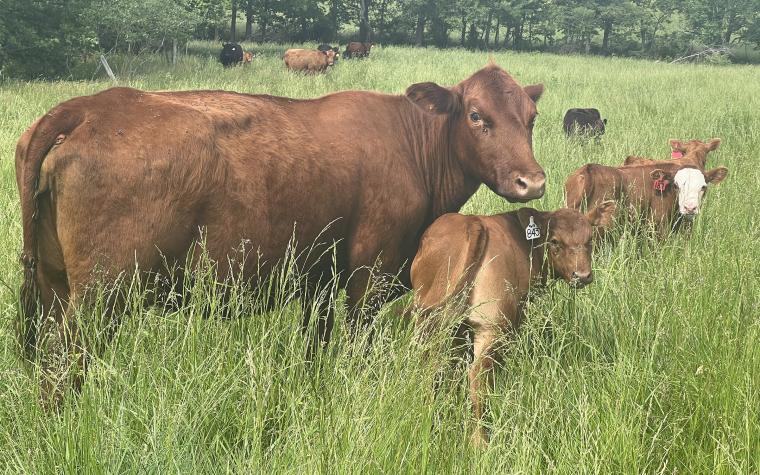TUSCUMBIA, Mo. – Soil testing and proper fertilization are key to productive warm-season forages in Missouri, says Rudra Baral, University of Missouri Extension field specialist in agronomy
In a new publication, Baral gives guidelines for soil testing and fertilizer management for warm-season forages in Missouri. “Maintaining healthy forage for livestock requires understanding the specific needs of soil and grass,” says Baral.
He recommends precise soil tests every three years to avoid applying unneeded fertilizer. That’s good for the environment and the checkbook, he says.
“Soil testing is nonnegotiable,” Baral says in “Soil Testing and Fertilizer Management Strategies for Warm-Season Forage in Missouri.”
Soil pH significantly affects nutrient availability, with most warm-season forages thriving at a pH between 6 and 6.5. Low pH reduces nitrogen availability and binds phosphorus, while high pH increases nitrogen loss and limits phosphorus uptake. “Understanding soil needs and carefully managing fertilizers is the first step toward achieving healthier pastures, higher yields and better forage quality,” he says.
There are three key things to consider when deciding when to apply fertilizer: soil temperature, growth stage or calendar date, says Baral. As a rule, apply fertilizer to Missouri forages from April to June.
Applying fertilizer too soon can cause weeds to grow quickly and take nutrients that forages need. Also, forages may not be mature enough to take up fertilizer when applied too early.
Warm-season annual grasses such as sorghum-Sudan, millet and crabgrass begin growing and tillering when soil temperatures reach 60 F at 4-inch depth. Native warm-season grasses such as big bluestem, switchgrass and Indian grass should grow 10-16 inches tall before applying fertilizer.
In the new publication, Baral suggests a split application of nitrogen fertilizer. Apply 50% of recommended nitrogen at spring green-up and the remaining 50% midsummer. Stop applying after July to let grasses go dormant and avoid winter damage.
Check with your local MU Extension agronomist for more information on soil testing. Some county offices have soil testing equipment for loan.
Also, see the MU Extension publication Soil Sampling Hayfields and Row Crops.
Photo
Forages. University of Missouri Extension field specialist in agronomy Rudra Baral recommends a precise soil test every three years to help prevent buying and applying unneeded fertilizer. Photo courtesy of Rudra Baral.
